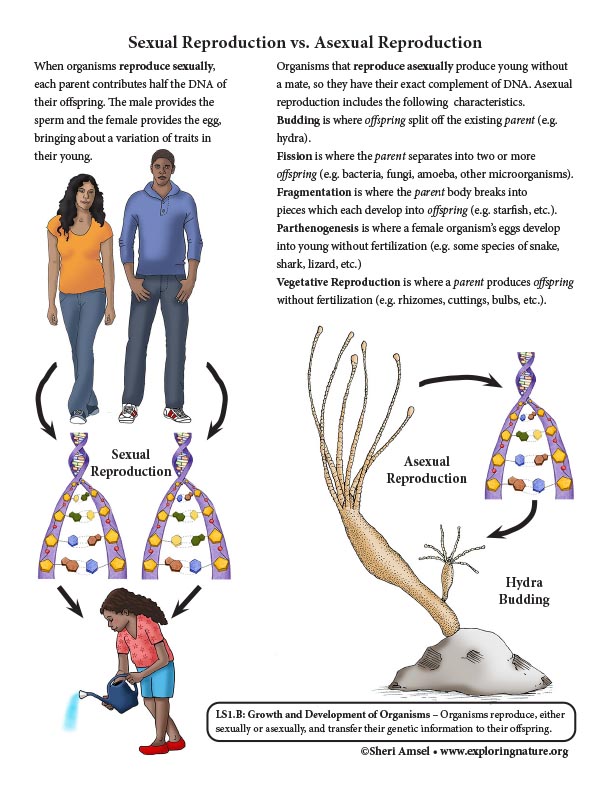

When organisms reproduce sexually, each parent contributes half the DNA of their offspring. The male provides the sperm and the female provides the egg, bringing about a variation of traits in their young.
Organisms that reproduce asexually produce young without a mate, so they have their exact complement of DNA. Asexual reproduction includes the following characteristics.
Budding is where offspring split off the existing parent (e.g. hydra).
Fission is where the parent separates into two or more offspring (e.g. bacteria, fungi, amoeba, other microorganisms).
Fragmentation is where the parent body breaks into pieces which each develop into offspring (e.g. starfish, etc.). Parthenogenesis is where a female organism’s eggs develop into young without fertilization (e.g. some species of snake, shark, lizard, etc.)
Vegetative Reproduction is where a parent produces offspring without fertilization (e.g. rhizomes, cuttings, bulbs, etc.).
Test Your Knowledge with: Sexual vs. Asexual Reproduction Offspring - Punnett Square Activity
When you research information you must cite the reference. Citing for websites is different from citing from books, magazines and periodicals. The style of citing shown here is from the MLA Style Citations (Modern Language Association).
When citing a WEBSITE the general format is as follows.
Author Last Name, First Name(s). "Title: Subtitle of Part of Web Page, if appropriate." Title: Subtitle: Section of Page if appropriate. Sponsoring/Publishing Agency, If Given. Additional significant descriptive information. Date of Electronic Publication or other Date, such as Last Updated. Day Month Year of access < URL >.
Amsel, Sheri. "Sexual Reproduction vs. Asexual Reproduction (6-8 Grade)" Exploring Nature Educational Resource ©2005-2024. December 13, 2024
< http://www.exploringnature.org/db/view/sexual-reproduction-vs-asexual-reproduction-6-8-grade >
